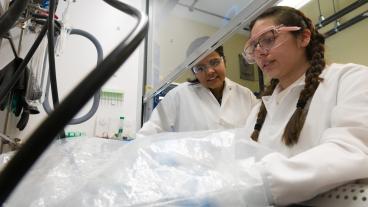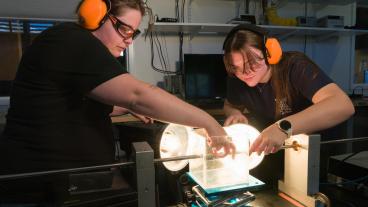A circular metals supply chain? That's the goal of NSF center
A Colorado School of Mines chemistry professor is among the leadership of a new National Science Foundation research center dedicated to the scientific challenges related to metals recycling and sustainability.
Associate Professor Jenifer Shafer is one of three executive board members of the new Center for Sustainable Separations of Metals (CSSM), led by the University of Pennsylvania.
Research coming out of the multi-institutional center will focus on fundamental chemistry aimed at improving the recovery of metals from post-consumer products – particularly the critical rare earth materials that underpin cellphones, renewable energy and more.
“We’ve become more attentive in the U.S. that certain elements are on the ‘near extinct’ list, these critical materials,” Shafer said. “The question we’re asking is, can we fundamentally reimagine some of the chemical processes that underpin metal recovery to make it more sustainable? When you toss your computer away or your car away, how do you actually get the materials out and put them back into something else?”
For the center’s researchers, sustainability is about three things – environmental responsibility, economics and efficient chemistry, she said. The ultimate goal is to recycle existing materials to create circular supply chains.
“We ‘recycle’ things today, but for the most part, a lot of that just sits around,” Shafer said. “There’s this idea that you could strip this wire out and put that wire back in something else, but a lot of times when you recover materials, they might not be in the right chemical form you want for the next application. You need to get that chemical down to its fundamental components so you can rebuild it.”
Shafer said she’s looking forward to translating her nuclear materials management experience to this different problem set.
“My expertise is in the chemistry that sits at the bottom of the periodic table,” Shafer said. “It turns out that the chemistry of some of the used nuclear fuel is relevant to the materials we’re concerned with for use in electronics.”
The center is directed by Eric Schelter at Penn, who along with colleagues Jessica Anna and Joseph Subotnik will work on incorporating kinetics into separation strategies to make recycling more economical.
Other CSSM collaborators include Suzanne Bart at Purdue University, who will work on chemical separations using electron transfer methods; George Schatz and Nobel laureate J. Fraser Stoddart at Northwestern University, who has developed gold extraction methods that don’t rely on toxic chemicals; and Jonathan Sessler at the University of Texas at Austin, who created resins that selectively take up lithium from mixtures.




